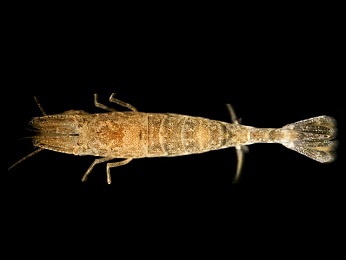New Frontiers
Invention · TravelMapping our future
AI TRACKS SEA-FLOOR ACTIVITY TO HELP PROTECT OUR OCEANS

Back at the start of the year, Global Fishing Watch published a study in which they used a combination of Artificial Intelligence (AI) and 5 years of satellite imagery to observe the otherwise hidden growing footprint of humanity in the sea. Their global map revealed a surge in offshore infrastructure and at least 72% of global fishing activity that had been hitherto untracked. Now, in late May 2024, a team of scientists from the USA and UK have revealed that they've used AI to map the global activity of seafloor biodiversity for the first time, recording the movements of seafloor invertebrate animals, such as worms, clams and shrimps, across all the oceans of the world.
The research, led by Texas A&M University (USA) with investigators from the University of Southampton (UK) and Yale University (USA), combined large existing datasets on sea creature activity sourced from hundreds of testing points around the world, with AI machine learning techniques. They were then able to reveal the critical factors that support and maintain the health of marine ecosystems as well as make accurate predictions about what is happening in sediment on the seafloor, at any point globally.
Marine sediments are extremely diverse and cover the majority of the Earth's surface. By stirring up and churning the seafloor - a process known as 'bioturbation' - small creatures living in the sediments can have a big impact in regulating global carbon, nutrient and biogeochemical cycles. Rather like worms turning and enriching the soil in our garden, invertebrates are doing the same on the seabed - improving conditions for ocean life.
The team found that a complex combination of a variety of environment conditions influence bioturbation and that this varies around the world. A multitude of factors, such as water depth, temperature, salinity, distance from land, animal abundance and nutrient availability all play a role. In turn, this affects the activity of invertebrate animals and ultimately the health of ocean ecosystems.
Understanding how these processes operate in different regions of the world gives scientists important insights into what is driving the health of oceans and how they may respond to climate change.
Martin Solan, Professor of Marine Ecology at the University of Southampton's School of Ocean and Earth Science said, "We have known for some time that ocean sediments are extremely diverse and play a fundamental role in mediating the health of the ocean, but only now do we have insights about where, and by how much, these communities contribute. For example, the way in which these communities affect important aspects of ocean ecosystems are very different between the coastlines and the deep sea."
"Our analysis suggests that the present global network of marine protected areas does not sufficiently protect these important seafloor processes, indicating that protection measures need to be better catered to promote ecosystem health." added Dr Lidya Tarhan.
The team hope their study will help with developing strategies to mitigate habitat deterioration and protect marine biodiversity.
The full findings of the report can be found in Current Biology HERE.
(Pic credit top left: Common Ragworm on ocean sediment - University of Southampton)